Introduction
Materials and Methods
1. Data sources and subjects
2. Operational definition of primary treatment and costs
3. Variables and statistical analysis
4. Ethical statement
Results
1. Basic characteristics of the study population
Table 1.
2. Medical costs and primary treatment regimens by sociodemographic factors
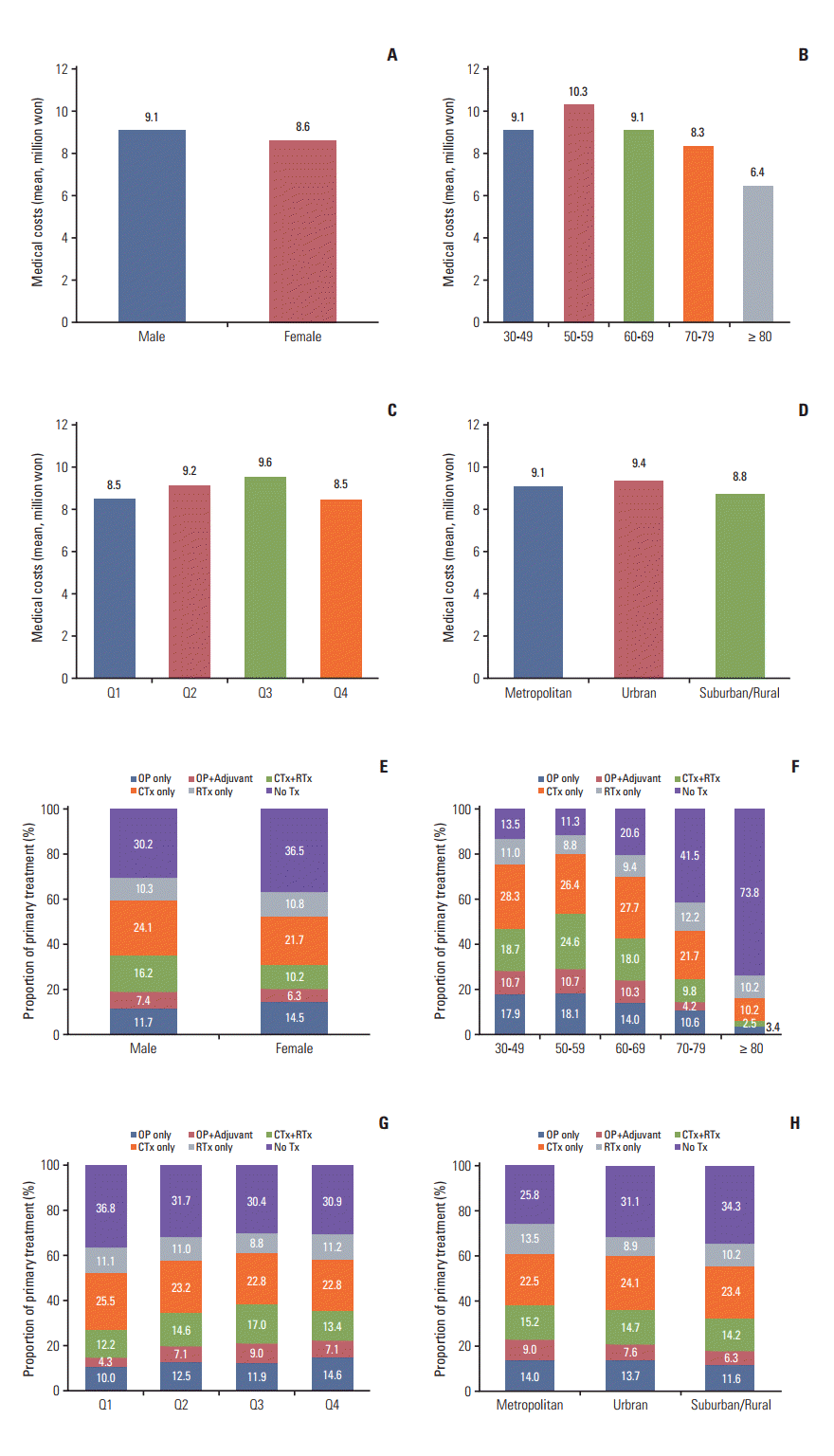 | Fig. 2.Overview of medical costs and primary treatment regimens by sociodemographic factors of lung cancer patients in Korea, 2003-2013. Overview of the medical costs (in Korean won) of newly diagnosed lung cancer cases from 2003 to 2013 in Korea by sex (A), age group (B), income level (C), and residence (D) are shown. The proportions of the primary treatment regimens by sex (E), age group (F), income level (G), and residence (H) are shown. OP, surgical treatment; RTx, radiation therapy; CTx, chemotherapy; OP+Adjuvant, OP+CTx or OP+RTx or OP+CTx+RTx; Tx, treatment; Q, quartile. |
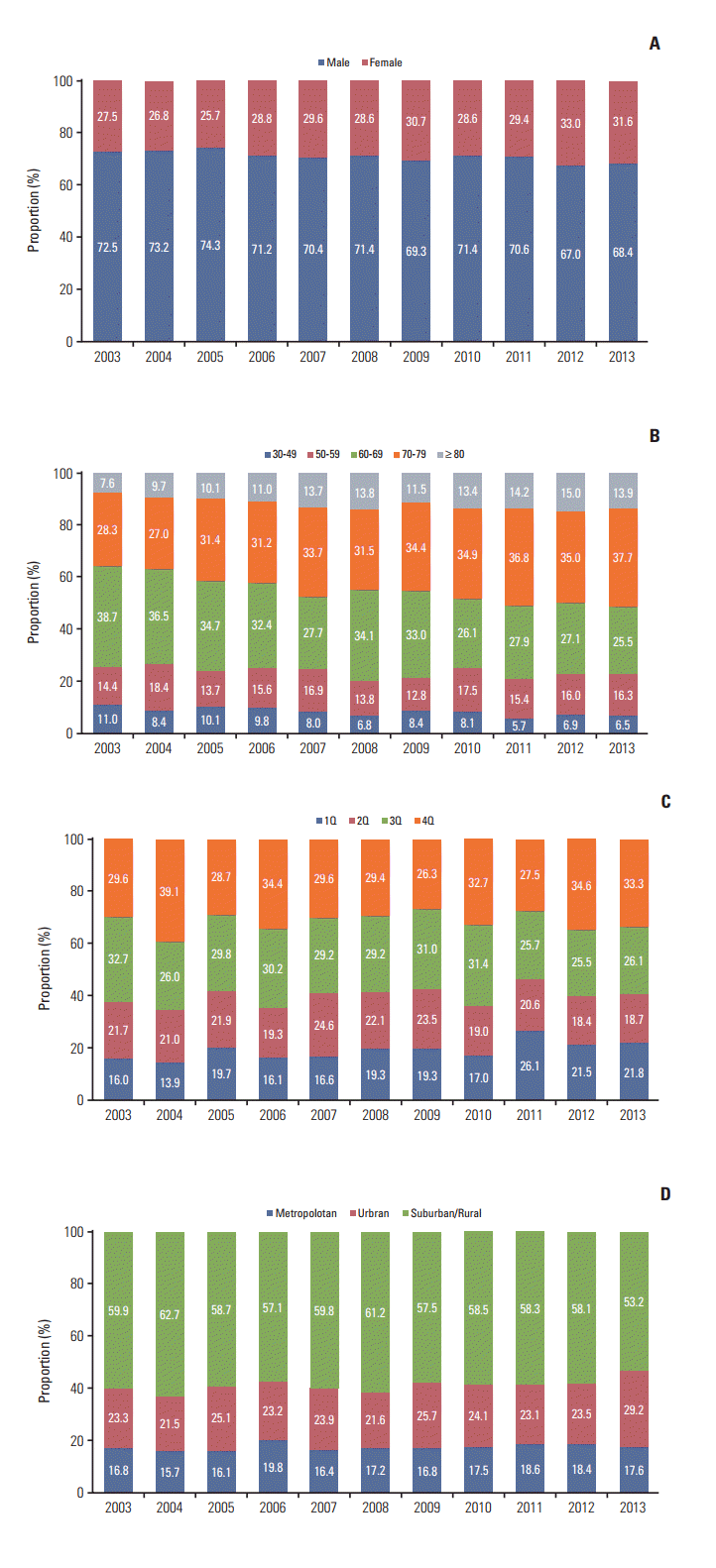 | Fig. 3.Trends in lung cancer by sociodemographic factors in Korea, 2003-2013. Trends in newly diagnosed lung cancer cases by sociodemographic factors from 2003 to 2013 are shown based on the proportion of cases for each year. Trends by sex (A), age group (B), income levels (C), and residence (D) are shown. Q, quartile. |
3. Trends in lung cancer cases by sociodemographic factors
4. Trends in primary treatment for lung cancer
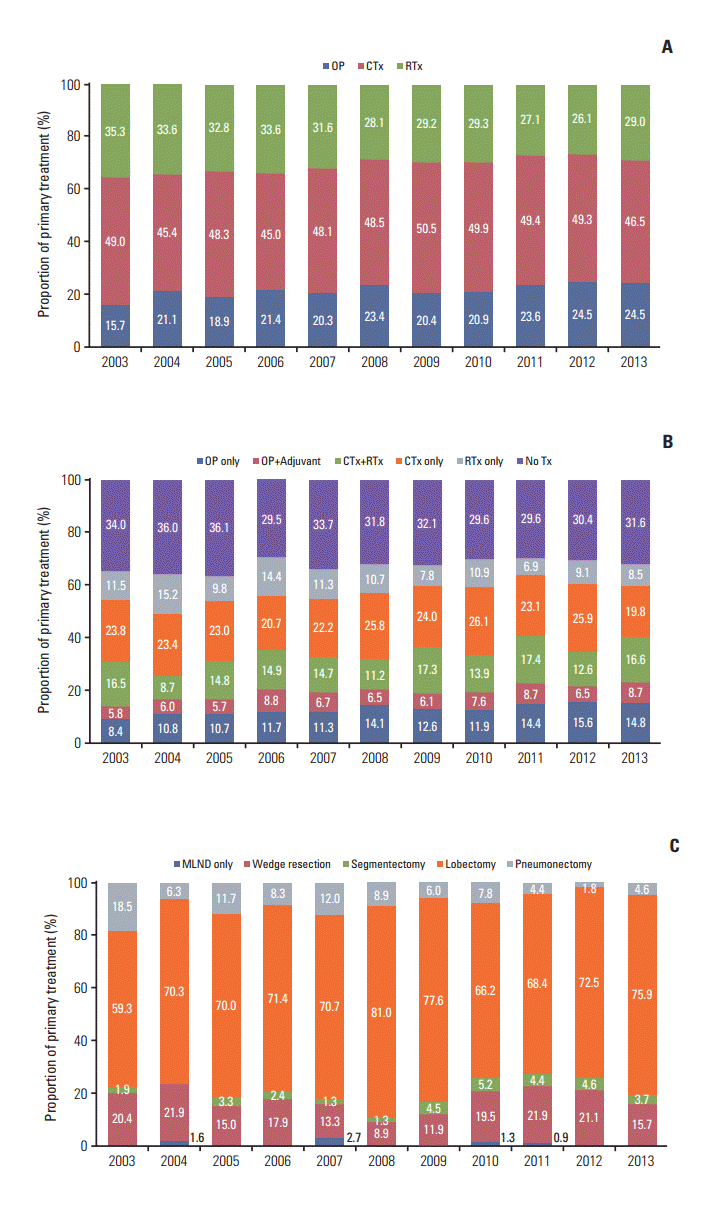 | Fig. 4.Trends in the primary treatment of lung cancer in Korea, 2003-2013. Trends in the primary treatment of lung cancer in Korea from 2003 to 2013 are shown based on the proportion of newly diagnosed cases for each year. Trends in the primary treatment modality (A), primary treatment regimen (B), and primary surgical treatment (C) are shown. OP, surgical treatment; CTx, chemotherapy; RTx, radiation therapy; OP+Adjuvant, OP+CTx or OP+RTx or OP+CTx+RTx; Tx, treatment; MLND, mediastinal lymph node dissection. |
5. Trends in medical costs for the primary treatment of lung cancer
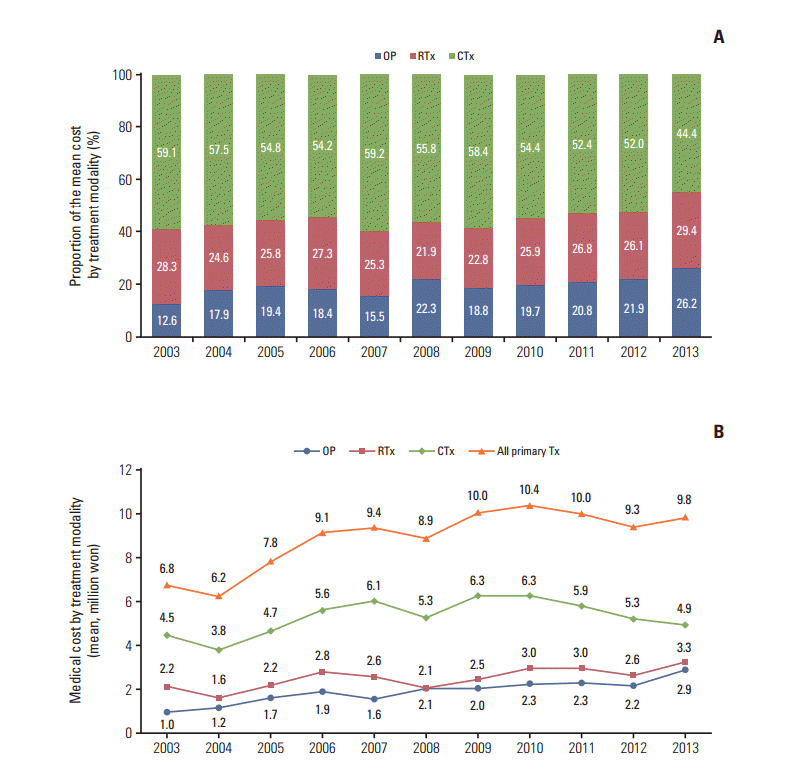 | Fig. 5.Trends in medical costs for the primary treatment of lung cancer in Korea, 2003-2013. Trends in medical costs for the primary treatment of lung cancer in Korea from 2003 to 2013 are shown based on the mean cost for each primary treatment modality for each year. Trends are shown in terms of the proportion of the mean cost (A), as well as in terms of the absolute value of the mean cost in Korean won (B). OP, surgical treatment; RTx, radiation therapy; CTx, chemotherapy; Tx, treatment. p for trend, OP < 0.0001, RTx < 0.001, CTx=0.023. |




 PDF
PDF Citation
Citation Print
Print


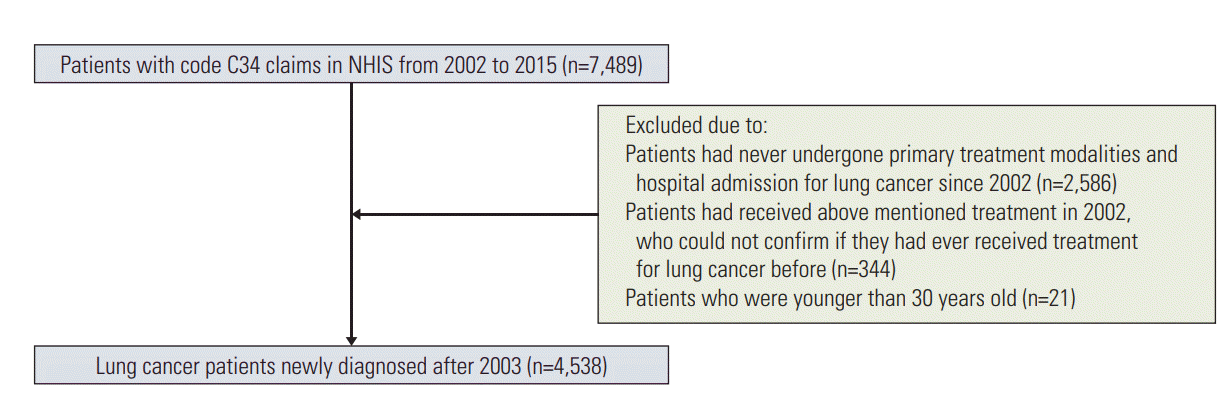
 XML Download
XML Download